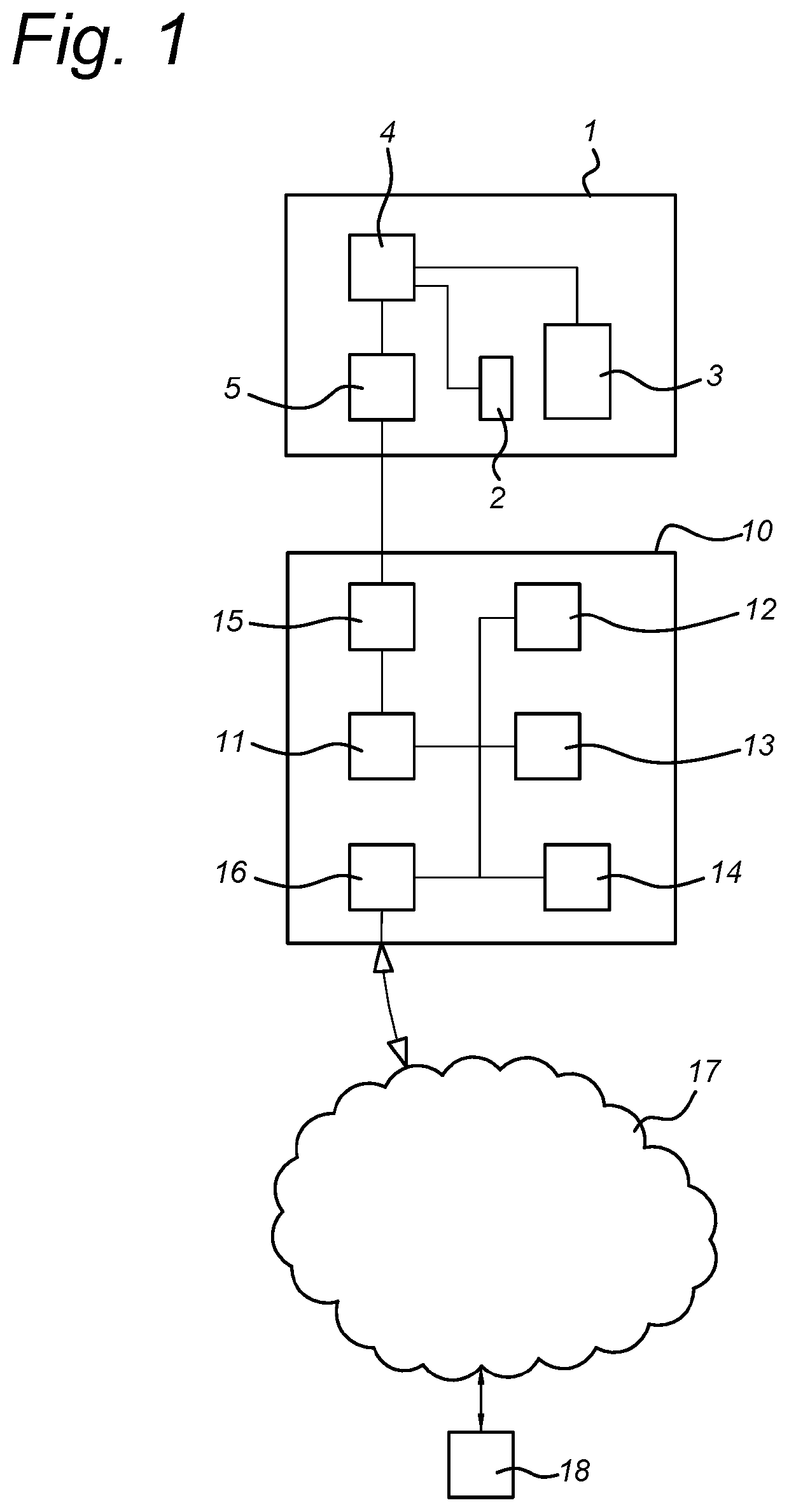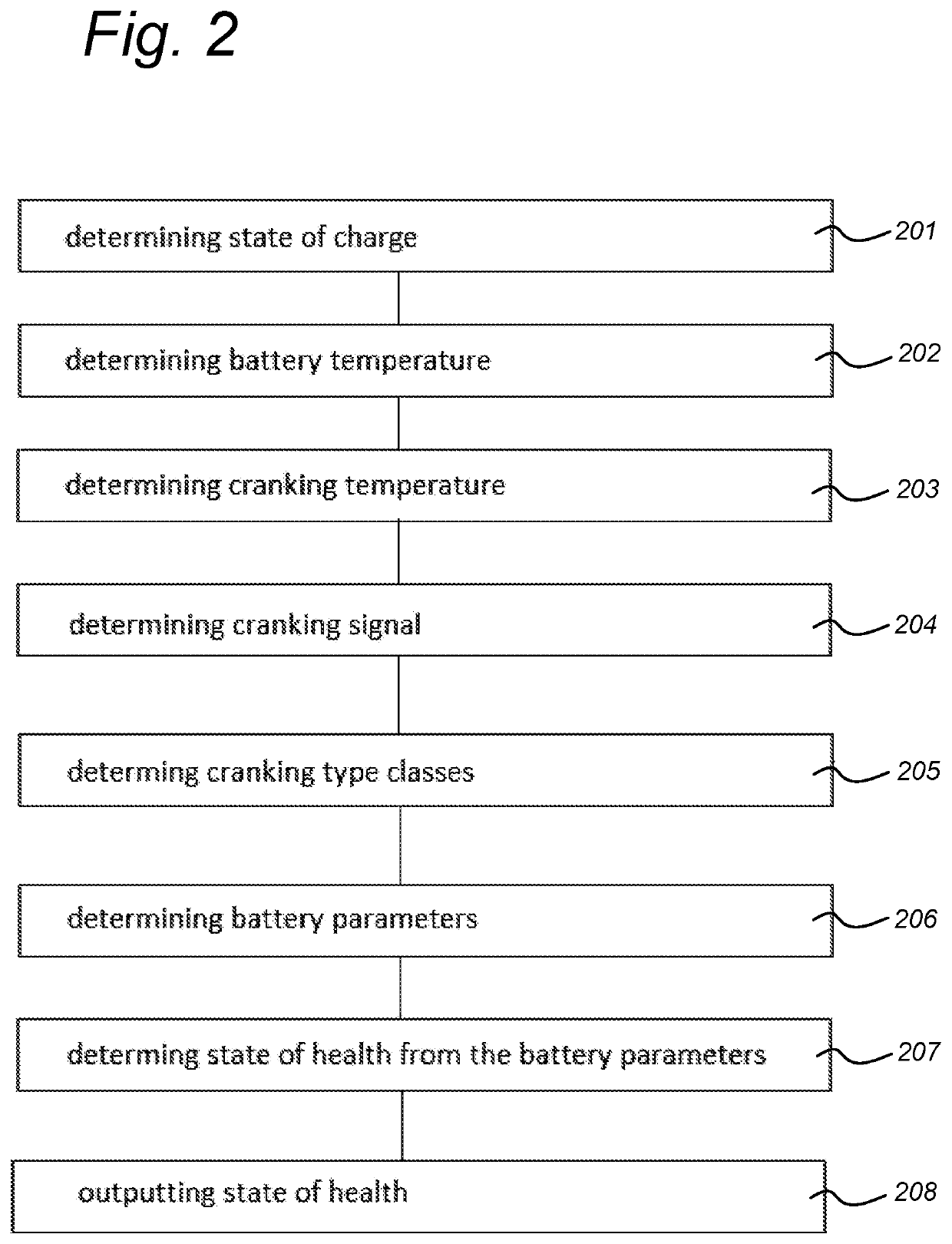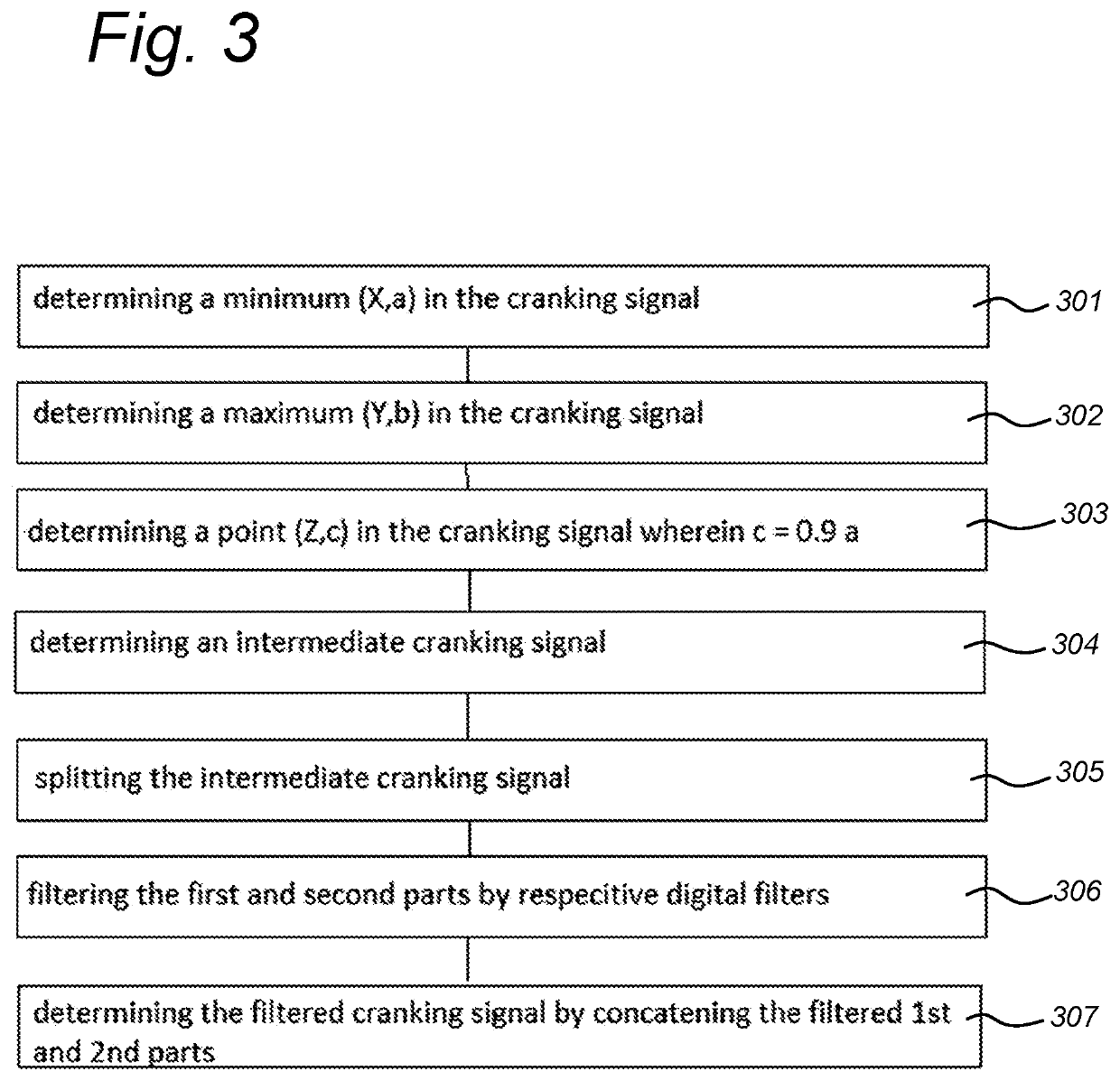Method and apparatus for indicating a state of health of a battery
- Summary
- Abstract
- Description
- Claims
- Application Information
AI Technical Summary
Benefits of technology
Problems solved by technology
Method used
Image
Examples
first embodiment
The values for IV, MCV and LVV in Table 1 can be stored and updated in the data base after the cranking events in the corresponding cranking type class. FIG. 5 shows a flow diagram of the method to determine a state of health from the battery parameters. According to this embodiment the step of determining the state of health of the battery comprises the substeps:[0109]Determining (501) for the at least one or more cranking type classes the battery parameters at an initial state of the battery for the at least one or more cranking type classes according to steps 200-204.[0110]Determining (502) for the at least one or more cranking type classes the battery parameters at a current state of the battery for the at least one or more cranking type classes according to steps 200-204.[0111]Determining (503) the state of health of the battery from a comparison of the determined battery parameters IV, MCV, LVV in the initial state and the parameters IV, MCV, LVV in the current state by applyi...
second embodiment
[0116]FIG. 7 shows a flow diagram of the method for determining a state of health from the battery parameters. According to this embodiment the step of determining the state of health of the battery in a cranking type class comprises the substeps:
[0117]Determining (701) a moving window average of the historical battery parameter LVV and MCV for a current state based on historical battery parameter LVV and MCV corresponding to historic states or previous cranks stored in the local memory 13, or that can be retrieved via the Internet 17 from the data base server 18. In an embodiment, the moving window average can be based on 30 stored historic states by a moving window of a width spanning 20 states, in the cranking type class from a first historic state N=−30 to a second historic state N=−10 before the current state in a the cranking type class according to formula
averagebatteryparameter=1W∑t=T-30t=T-30+Wbatteryparameter(t)
Wherein t represents a sample number t, T represents a current...
PUM
 Login to View More
Login to View More Abstract
Description
Claims
Application Information
 Login to View More
Login to View More - R&D
- Intellectual Property
- Life Sciences
- Materials
- Tech Scout
- Unparalleled Data Quality
- Higher Quality Content
- 60% Fewer Hallucinations
Browse by: Latest US Patents, China's latest patents, Technical Efficacy Thesaurus, Application Domain, Technology Topic, Popular Technical Reports.
© 2025 PatSnap. All rights reserved.Legal|Privacy policy|Modern Slavery Act Transparency Statement|Sitemap|About US| Contact US: help@patsnap.com



